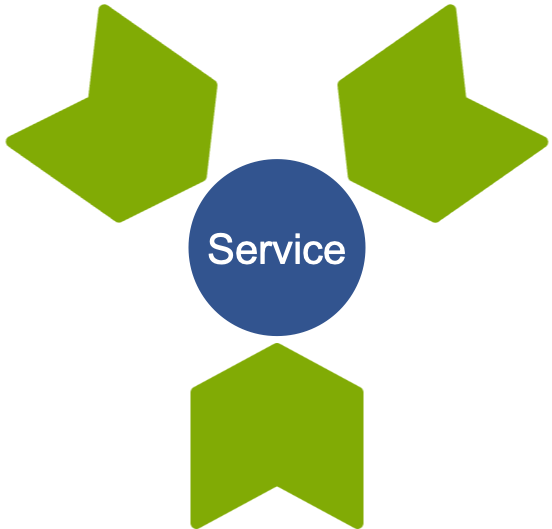About a week ago I passed the Exam to the ITIL 4 Managing Professional as one of the first ever. In this post I can’t give an introduction to the whole new system. There are other sites that are covering this already (see Complementing Links below). I’ll summarize the main differences — and sameness —, so you can evaluate for yourself if ITIL 4 is something you should go with or if you are already actually living the ITIL 4 mindset, although you are adapting ITIL v3.
ITIL v3 versus ITIL 4
ITIL v3 and 4 are not that far away from eachother in terms of the overall target and the basic philosophy. In fact, ITIL 4 basically just changes the point of view on the same problem — and with that of course puts emphasis and focus on different things. But that also explains the totally different appearances of both systems and why there is no transition path for the Intermediate Certificates, but just Foundation and Expert to Managing Professional.
While ITIL v3 puts a lot of effort into describing different disciplines (processes) and their interdependencies, all in all describing a very complex system, it tends to lose focus on the reason ITIL exists. ITIL 4 tries to compensate this nature of the ITIL v3 system by explicitely arranging everything around the reason: Services and outcome to the customer, making both, Service and Customer (outcome) the center part where everything else orbits around.
Interpreting ITIL v3
Let’s assume following basic interpretation of ITIL v3:
- It’s all about providing Services with an outcome for the customer
- Phases are just a “home” for the processes, not necessarily an order
- Phases resemble the principle stages a Service continually iterates through
- Communication is done across all phases, always including all important stakeholders!
Especially:- Service Design has to explicitely include Service Operation Stakeholders
(a Service Design needs to be operable)
- Service Operation has to give feedback to Service Design
(issues and potential improvements are identified while in operation)
- Service Design has to explicitely include Service Operation Stakeholders
- ITIL is a good practice, not a standard dictating the existence and maturity of certain processes
- The processes support effective service design and delivery
If you stick to this interpretation, ITIL v3 already is a very potent tool that can be light weight.
On top, the basic philosophy behind ITIL v3 essentially is to promote communication across borders and close collaboration (and therefor breaking up silos) to consequentially facilitate customer outcome.
The problem is, that the ITIL v3 system is indeed very complex, making it easy to concentrate on the wrong things and lose focus on what the processes actually contribute to the value creation. Additionally, in ITIL v3 the services “travelled” through the different phases and their processes — somewhat drawing a picture of a service producing factory with a single production line having different stations.

Focus and Emphasis in ITIL 4
With ITIL 4 the interpretation, as well as the philosophy, are now is explicitly expressed in the guiding principles which are above all, being the roof of the ITIL 4 Service Value System. That alone is improvement worthy to adapt.
As introduced above, ITIL 4 takes another point of view to further support which was already expressed: everything is observed from “inside” the service. This view helps to concentrate on the things that really facilitate the service itself. The picture of the factory drawn above therefor transforms from a production line factory to a factory with (effectively) equipped workbenches per service.

As the workbenches need tools (and not every workbench — or service — needs to have every tool) it is consequential to “degrade” ITIL v3 processes to practices, basically building a tool box to create and deliver your services.
Now that there is a big tool box you can use, it is far easier to focus more on customer and outcome. ITIL 4 acknowledges that ITIL v3 didn’t achieve a change of mindset and culture this requires.
Therefor ITIL 4 is much more about organization, people, culture and customer collaboration as ITIL has been before!
ITIL 4 is embracing the contemporary spirit
AXELOS acknowledges that there are existing and proven frameworks and philosophies that are complementary to ITIL and help to (quickly) deliver added value for the customer.
This step is just pure logic and ITIL 4 follows itself with this (Guiding Principle “Start where you are”).
The incorporated and referenced frameworks and philosophies are:
- DevOps: promoting communication across borders by practically putting all important stakeholders for design and delivery in one team (a good approach to de-silo the IT)
(also reflects the Guiding Principle “Collaborate and promote visibility”)
- Agile: focus on quick delivery of added value and faster adoption to changing environments
(also reflects the Guiding Principle “Progress iteratively with feedback”)
- Lean: reduces waste and increases throughput and scalability
(also reflects the Guiding Principle “Keep it simple and practical”)
Summary
ITIL 4 tries to improve the already well-developed ITIL v3 by re-focusing and restructuring the ITIL system (the Service Lifecylce turns to the Service Value System).
By changing the point of view, ITIL 4 now emphasizes on things that weren’t achieved enough in the past with ITIL v3: organizational change, people, culture, and close collaboration with the customer.
The new iteration of ITIL also is very explicitly expressing its own values, not just in the paragraphs but also with an overall philosophy.
While I think, this is a huge plus, it requires to adapt to a completely new system.
Complementing Links
- The ITIL 4 Service Value System Explained
https://itsm.tools/the-itil-4-service-value-system-explained/
- ITIL 4 Guiding Principles – what’s this all about?
https://www.itsmf.co.uk/itil4-guiding-principles-whats-this-all-about/
- From v3 to 4 – This is the new ITIL
https://www.axelos.com/news/blogs/february-2019/from-v3-to-4-this-is-the-new-itil
ITIL is a [registered] trade mark of AXELOS Limited, used under permission of AXELOS Limited. All rights reserved.
If you like this article, please share and like it on LinkedIn and/or XING.
